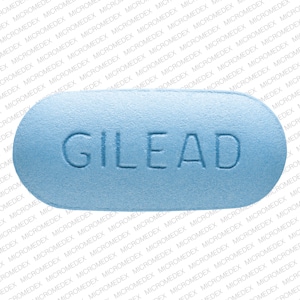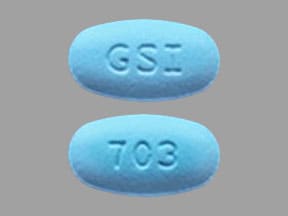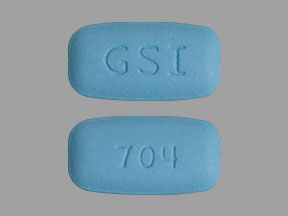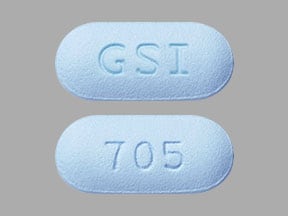What is Truvada?
Truvada is a prescription medicine that is used to:
- treat HIV-1 infection when used with other anti-HIV-1 medicines in adults and children who weigh at least 37 pounds (at least 17 kg).
- help reduce the risk of getting HIV-1 infection when used with safer sex practices in adults and adolescents who weigh at least 77 pounds (at least 35 kg).
Truvada works better to reduce the risk of getting HIV-1 when the medicines are in your bloodstream before you are exposed to HIV-1.
HIV is the virus that causes AIDS (Acquired Immune Deficiency Syndrome).
Truvada contains the medicines emtricitabine and tenofovir disoproxil fumarate.
It is not known if Truvada is safe and effective in children with HIV-1 infection who weigh less than 37 pounds (less than 17 kg).
What is the most important information I should know about Truvada?
Truvada can cause serious side effects, including:
- Worsening of Hepatitis B virus infection (HBV). Your healthcare provider will test you for HBV before starting treatment with Truvada. If you have HBV infection and take Truvada, your HBV may get worse (flare-up) if you stop taking Truvada. A "flare-up" is when your HBV infection suddenly returns in a worse way than before.
- Do not stop taking Truvada without first talking to your healthcare provider.
- Do not run out of Truvada. Refill your prescription or talk to your healthcare provider before your Truvada is all gone.
- If you stop taking Truvada, your healthcare provider will need to check your health often and do blood tests regularly for several months to check your HBV infection, or give you a medication to treat hepatitis B. Tell your healthcare provider about any new or unusual symptoms you may have after you stop taking Truvada.
For more information about side effects, see the section "What are the possible side effects of Truvada?"
Other important information for people who take Truvada to help reduce their risk of getting HIV-1 infection:
Before taking Truvada to reduce your risk of getting HIV-1 infection:
- You must be HIV-negative to start Truvada. You must get tested to make sure that you do not already have HIV-1 infection.
- Do not take Truvada to reduce the risk of getting HIV-1 unless you are confirmed to be HIV-negative.
- Many HIV-1 tests can miss HIV-1 infection in a person who has recently become infected. If you have flu-like symptoms, you could have recently become infected with HIV-1. Tell your healthcare provider if you had a flu-like illness within the last month before starting Truvada or at any time while taking Truvada. Symptoms of new HIV-1 infection include:
- tiredness
- fever
- joint or muscle aches
- headache
- sore throat
- vomiting or diarrhea
- rash
- night sweats
- enlarged lymph nodes in the neck or groin
While you are taking Truvada to reduce your risk of getting HIV-1:
- Just taking Truvada may not keep you from getting HIV-1.
- You must continue using safer sex practices while you are taking Truvada to reduce your risk of getting HIV-1.
- You must stay HIV-negative to keep taking Truvada to reduce your risk of infection.
- Know your HIV-1 status and the HIV-1 status of your partners.
- Practice safer sex by using a latex or polyurethane condom to lower the chance of sexual contact with semen, vaginal fluids, or blood.
- Ask your partners with HIV-1 if they are taking anti-HIV-1 medicine and have an undetectable viral load. An undetectable viral load is when the amount of virus in the blood is too low to be measured in a lab test. To maintain an undetectable viral load, your partners must keep taking anti-HIV-1 medicine every day. Your risk of getting HIV-1 is lower if your partners with HIV-1 are taking effective treatment.
- Get tested for HIV-1 at least every 3 months or when your healthcare provider tells you.
- Get tested for other sexually transmitted infections such as syphilis, chlamydia, and gonorrhea. These infections make it easier for HIV-1 to infect you.
- If you think you were exposed to HIV-1, tell your healthcare provider right away. They may want to do more tests to be sure you are still HIV-negative.
- Get information and support to help reduce risky sexual behavior.
- Have fewer sex partners.
- Do not miss any doses of Truvada. Missing doses may increase your risk of getting HIV-1 infection.
- If you do become HIV-positive, you need more medicine than Truvada alone to treat HIV-1. Truvada by itself is not a complete treatment for HIV-1.
- If you have HIV-1 and take only Truvada, over time your HIV-1 may become harder to treat.
Who should not take Truvada?
For people taking Truvada to reduce the risk of getting HIV-1 infection:
Do not take Truvada to help reduce your risk of getting HIV-1 if:
- you already have HIV-1 infection. If you are HIV-positive, you need to take other medicines with Truvada to treat HIV-1. Truvada by itself is not a complete treatment for HIV-1.
- you do not know your HIV-1 infection status. You may already be HIV-positive. You need to take other HIV-1 medicines with Truvada to treat HIV-1.
Truvada can only help reduce your risk of getting HIV-1 before you are infected.
What should I tell my healthcare provider before taking Truvada?
Before taking Truvada, tell your healthcare provider about all of your medical conditions, including if you:
- have liver problems, including HBV infection
- have kidney problems or receive kidney dialysis treatment
- have bone problems
- are pregnant or plan to become pregnant. It is not known if Truvada can harm your unborn baby. Tell your healthcare provider if you become pregnant during treatment with Truvada.
- Pregnancy Registry: There is a pregnancy registry for women who take Truvada during pregnancy. The purpose of this registry is to collect information about the health of you and your baby. Talk to your healthcare provider about how you can take part in this registry.
- Are breastfeeding or plan to breastfeed. Truvada can pass to your baby in your breast milk.
- Do not breastfeed if you have HIV-1 or if you think you have recently become infected with HIV-1 because of the risk of passing HIV-1 to your baby.
- If you take Truvada to reduce the risk of getting HIV-1, talk with your healthcare provider about the best way to feed your baby.
Tell your healthcare provider about all the medicines you take, including prescription and over-the-counter medicines, vitamins, and herbal supplements.
Some medicines may interact with Truvada. Keep a list of your medicines and show it to your healthcare provider and pharmacist when you get a new medicine.
- You can ask your healthcare provider or pharmacist for a list of medicines that interact with Truvada.
- Do not start a new medicine without telling your healthcare provider. Your healthcare provider can tell you if it is safe to take Truvada with other medicines.
How should I take Truvada?
- Take Truvada exactly as your healthcare provider tells you to take it.
- If you take Truvada to treat HIV-1 infection, you need to take other HIV-1 medicines. Your healthcare provider will tell you what medicines to take and how to take them.
- Take Truvada 1 time each day with or without food.
- Children who take Truvada are prescribed a lower strength tablet than adults. Children should swallow the Truvada tablet. Tell your healthcare provider if your child cannot swallow the tablet, because they may need a different HIV-1 medicine.
- Your healthcare provider will change the dose of Truvada as needed based on your child's weight.
- Take Truvada at the same time each day to help keep Truvada blood levels constant.
- Do not miss a dose of Truvada. Missing a dose lowers the amount of medicine in your blood. Refill your Truvada prescription before you run out of medicine.
- Do not change your dose or stop taking Truvada without first talking with your healthcare provider. Stay under a healthcare provider's care when taking Truvada.
- If you take too much Truvada, call your healthcare provider or go to the nearest hospital emergency room right away.
What are the possible side effects of Truvada?
Truvada may cause serious side effects, including:
- See "What is the most important information I should know about Truvada?"
- New or worse kidney problems, including kidney failure. Your healthcare provider should do blood and urine tests to check your kidneys before you start and during treatment with Truvada. Your healthcare provider may tell you to take Truvada less often, or to stop taking Truvada if you get new or worse kidney problems.
- Changes in your immune system (Immune Reconstitution Syndrome) can happen when an HIV-1 infected person starts taking HIV-1 medicines. Your immune system may get stronger and begin to fight infections that have been hidden in your body for a long time. Tell your healthcare provider right away if you start having any new symptoms after starting Truvada for treatment of HIV-1 infection.
- Bone problems can happen in some people who take Truvada. Bone problems include bone pain, or softening or thinning of bones, which may lead to fractures. Your healthcare provider may need to do tests to check your bones.
- Too much lactic acid in your blood (lactic acidosis). Too much lactic acid is a serious but rare medical emergency that can lead to death. Tell your healthcare provider right away if you get these symptoms:
- weakness or being more tired than usual
- unusual muscle pain
- being short of breath or fast breathing
- stomach pain with nausea and vomiting
- cold or blue hands and feet
- feel dizzy or lightheaded
- fast or abnormal heartbeat
- Severe liver problems. In rare cases, severe liver problems can happen that can lead to death. Tell your healthcare provider right away if you get these symptoms:
- skin or the white part of your eyes turns yellow
- dark "tea-colored" urine
- light-colored stools
- loss of appetite for several days or longer
- nausea
- stomach-area pain
The most common side effects of Truvada in people taking Truvada to treat HIV-1 infection include:
- diarrhea
- nausea
- tiredness
- headache
- dizziness
- depression
- problems sleeping
- abnormal dreams
- rash
Common side effects in people who take Truvada to reduce the risk of getting HIV-1 infection include:
- headache
- stomach-area (abdomen) pain
- decreased weight
These are not all the possible side effects of Truvada.
Call your doctor for medical advice about side effects. You may report side effects to FDA at 1-800-FDA-1088.
Truvada Images
General information about the safe and effective use of Truvada
Medicines are sometimes prescribed for purposes other than those listed in a Medication Guide. Do not use Truvada for a condition for which it was not prescribed. Do not give Truvada to other people, even if they have the same symptoms you have. It may harm them. You can ask your healthcare provider or pharmacist for information about Truvada that is written for health professionals.
How should I store Truvada?
- Store Truvada at room temperature between 68°F to 77°F (20°C to 25°C).
- Keep Truvada in its original container.
- Keep the container tightly closed.
- Do not use Truvada if seal over bottle opening is broken or missing.
Keep Truvada and all other medicines out of reach of children.
What are the ingredients in Truvada?
Active ingredients: emtricitabine and tenofovir disoproxil fumarate.
Inactive ingredients: croscarmellose sodium, lactose monohydrate, magnesium stearate, microcrystalline cellulose, and pregelatinized starch (gluten free). The 200 mg/300 mg strength tablets are coated with Opadry II Blue Y-30-10701, which contains FD&C Blue #2 aluminum lake, hypromellose 2910, lactose monohydrate, titanium dioxide, and triacetin. The 167 mg/250 mg, 133 mg/200 mg, and 100 mg/150 mg strength tablets are coated with Opadry II Blue, which contains FD&C Blue #2 aluminum lake, hypromellose 2910, lactose monohydrate, titanium dioxide, and triacetin.
For more information, call 1-800-445-3235 or go to www.TRUVADA.com.








